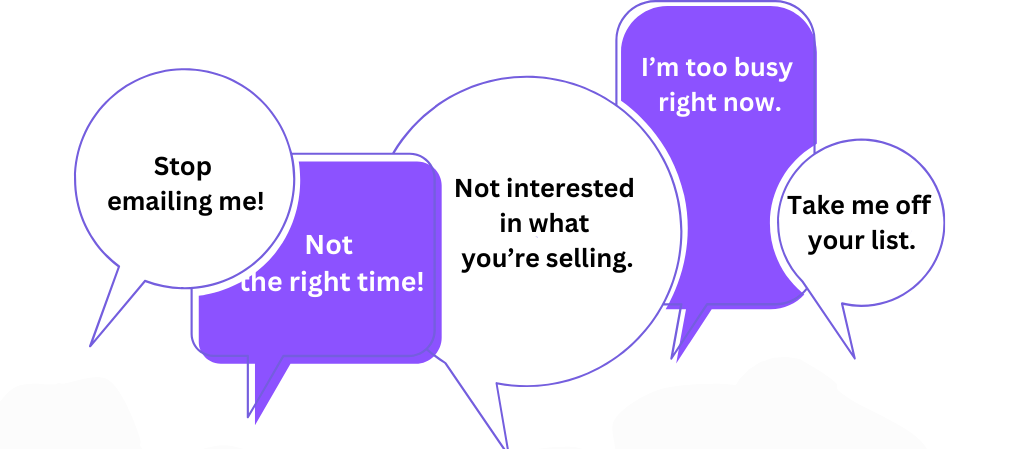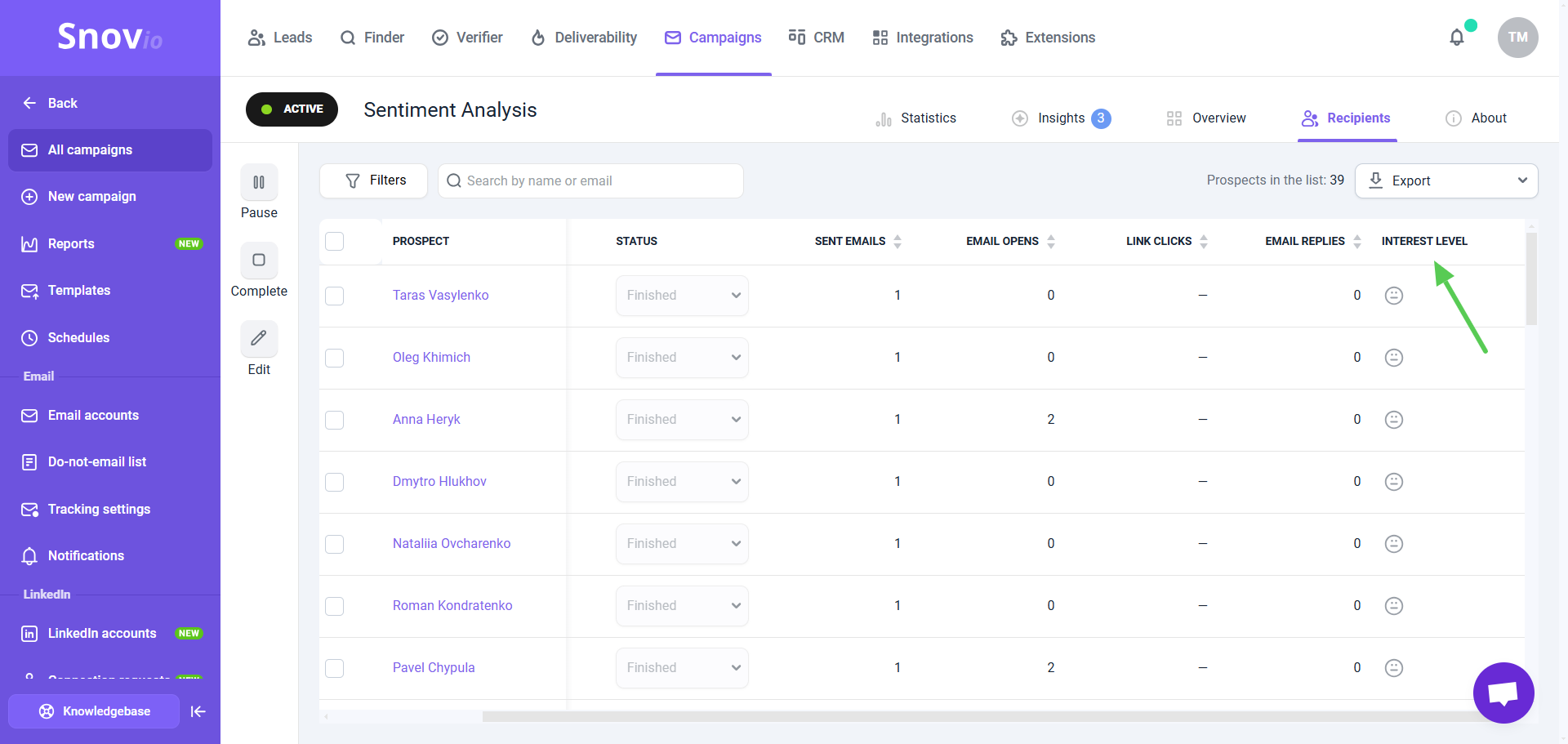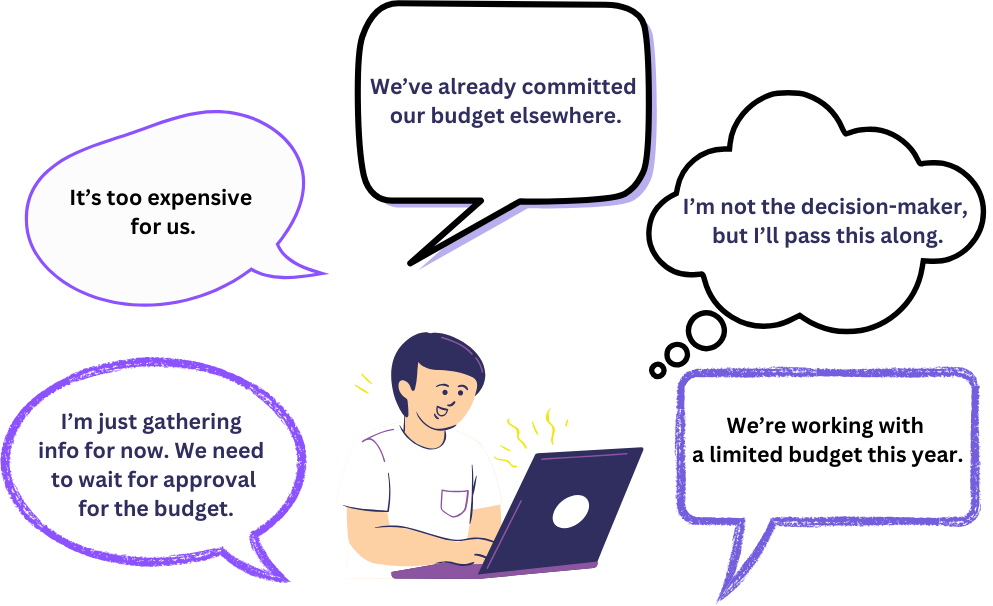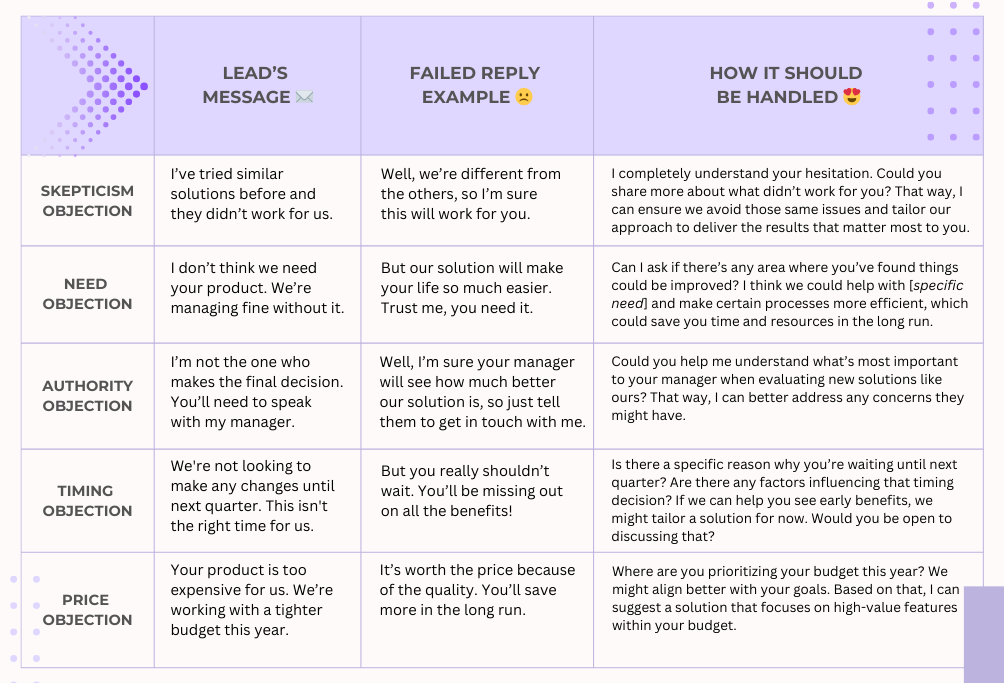This article explains how to use Sentiment analysis to improve your interest level, what to do with negative replies and how to influence prospects' decision-making.
How to get value from negative responses
Convert negative replies to deals
In sales and cold outreach, reply rate is often used as a key metric to measure engagement. However, while a high reply rate seems like a success, it doesn't always lead to positive results, especially if many of those replies are negative.
You may have a reply rate of 30%, but all of those can be "Unsubscribe" or "Not interested."
Reply rate is about the quantity of responses, while sentiment is about the quality of those responses. And while the first one shows if people are engaging, the latter reveals how interested they are in your offer. Both are important for the effectiveness of your campaign.
This is where Snov.io’s Sentiment analysis feature comes in.
What is Sentiment analysis for?
Sentiment analysis examines the reply content and determines if its main sentiment is positive, negative or neutral.
It helps to identify interested prospects from those who are not. You can score prospects based on the tone of their replies and their mood of responses.
You can focus on those with the highest potential to convert into customers while not wasting time and resources on less promising leads.
Manual interest level assignment is available on all plans. To enable automatic analysis with AI, upgrade to the Pro 5K plan or higher. After the upgrade, we will automatically evaluate all replies from the last 30 days across all your campaigns.
You can see a prospect's interest level in various places within your Snov.io workflow: in the prospect’s profile, in the Recipients list and CRM.
The interest level is determined based on the mood of prospect’s reply and includes three levels:
Interested: the prospect shows curiosity or a desire to continue communication
Maybe: the prospect shows doubt or uncertainty but still has the potential for conversion
Not interested: the prospect's mood indicates that the offer isn’t for them or that the timing isn’t right
Learn how Sentiment analysis works in Snov.io
Learn more about Snov.io cold outreach tools
What is a negative reply
A negative reply typically refers to responses like “No,” “Unsubscribe” or “Not interested.”
While these are still responses, they generally indicate that the lead is unlikely to convert. Such responses suggest it's time to change your strategy or move on to more promising prospects, as continuing to push such contacts further may not bring positive results.
Why you get negative replies
Negative responses are all too common during cold outreach, but understanding the reasons behind them can help you improve the results. Here are some common ones:
- Irrelevant or generic content: if the message seems like a mass email, the prospect might think it's spam or just ignore it
- Sales-driven or pushy messages: these can feel too sales-driven and might annoy people
- Too much information: big paragraphs, no visual dividers, unclear calls to action may only overwhelm, bore and confuse the prospect
- Poor timing: messaging at the wrong time, like during a busy season or when the prospect isn’t ready to engage, may result in a negative response
- Lack of clear value: if your message doesn’t match the prospect's needs, pains or goals, they may see no reason to reply positively
- Lack of trust or credibility: if the prospect doesn’t know you or your company, they might be skeptical and respond negatively

How to get value from negative replies
Not all the negative replies mean the end of your outreach efforts. In general, there is a way to get results even from this interest level.
Step 1. Filter prospects by their interest level
Open your campaign from the campaign list and click the Recipients tab at the top right. Interest level will be displayed in a separate data column for all recipients who have replied at least once.
Use the Filter menu on the left to filter prospects by their interest level. For instance, you can use the Quick actions panel at the top to move them to different lists or create deals in the CRM. Then, filter only Not interested prospects.
Step 2. Sort negative replies
Categorize negative responses — are they truly negative (rejection, anger) or just neutral (“not interested” or “unsubscribe”). Next, start analyzing to see what you can do with these objections.
2.1. Understand when replies require special attention
Here are the signs that tell your prospects aren’t interested, so you should change your strategy to re-engage and find new ways to connect:
Non-engagement, negative or dismissive responses
If the prospect consistently fails to respond to multiple follow-ups (email or LinkedIn messages) or responds with something like: “We’re not interested at this time," “Remove me from your list,” or "I want to unsubscribe," it's a clear sign of disinterest.
Tip: Such replies should be handled gently and carefully. Accept their response politely and then highlight your other services, features or products that may be a better match. Keep your email short and non-promotional.
Budget or authority red flags
If prospects show no signs of having the budget or decision-making authority (with replies like "I’ll pass this on to the manager"), it’s a sign that it probably won’t bring results.
Tip: Ask questions early to specify a budget and know their decision-making authority. If those aren’t in place, try to identify the decision-maker and determine the best person to talk to.
Snov.io’s finder tools let you easily find the decision-maker by simply entering the required data, such as the company name and position.
 Indifference, lack of details, inconsistent or unpredictable responses
Indifference, lack of details, inconsistent or unpredictable responses
If replies are vague, such as "Send more information," without any clear interest or request for details, they may just be polite but not engaged. Also, if responses come at irregular intervals with a lot of back-and-forth and long pauses in between, your offer may not be their priority.
“Just browsing” attitude
No signs of urgency or words like “I’m just exploring options” often mean prospects aren’t ready to buy anytime soon.
Tip for both cases: respect their pace, but don’t waste too much energy on them. Plan some future follow-ups, but don't expect immediate conversions.
Learn more about email response rate and dealing with negative replies in our blog.
2.2. Identify prospects who aren't interested yet but have potential
This is a common scenario where prospects aren't initially interested but still have the potential to be converted. In this case, look for signs that suggest that not-interested prospects might be convinced later.  Mild interest with hesitation
Mild interest with hesitation
Leads show a bit of interest but say something like: “This seems interesting, but we’re not looking for a solution right now” — they might be having budget concerns or timing issues now.
Soft objections
They say things like “I’ll get back to you” or “We’re happy with what we have now.” These are often polite refusals, but it doesn't always mean they’re completely uninterested. Just politely ask a question like, "Out of interest, what are you currently using?"
If they reply, you can send them a comparison chart highlighting how your solution outperforms competitors, opening the door for future conversations.
Mentioning plans
They say something like “We’re planning to invest in this type of solution next quarter,” or "We're not ready yet, but we are starting to explore options". It's a sign that they just need more time and nurturing.
Decision-making process
They mention "re-evaluating vendors" or "in the middle of a budgeting cycle" — it means they are open to discussion.
Past engagement and trusting your brand
You know they’ve interacted with your content before (answered your emails, commented on blog posts or LinkedIn). Maybe they are open to future conversations and need more time to warm up to the idea of becoming a customer.
Step 3. Convert negative replies to deals
You need a strategy that focuses on education, nurturing and value-building. Here’s how to approach them: Provide long-term value
Provide long-term value
Be a helpful advisor and offer solutions to their pains and problems before you even try to sell.
Offer educational content, free resources, demos or trials
Share case studies, testimonials, whitepapers or industry reports related to their issues. Address their pains and highlight how others in their industry have benefited from your solution.
Let them experience the value firsthand without any commitment. This can often overcome hesitations.
Use social proof
Customer testimonials are a powerful tool to change someone’s mind. If your prospect sees that others benefit from your product, they may want to reconsider.
Send them success stories or case studies of customers who solved similar problems using your product.
Be persistent but not pushy
Maintain the relationship without being pushy with regular follow-ups. Space out your follow-ups with valuable content that’s not just a repeat of your initial pitch. You can set up follow-up sequences in Campaigns at Snov.io.
Personalize your messages
Make your messages relevant to their situation. Reference your past conversations by writing something like: “Last time we spoke, you mentioned you were focusing on reducing costs. Since then, we’ve added a feature that can help with that, and I think you’d be interested.”
Offer specific solutions to the pain points they shared. For example, "I remember you mentioned struggling with [X]. Our new feature is designed to help with that."
Dynamic content that you can add in Snov.io's email editor can make your emails more personalized and effective.
Learn more tips about effective personalized emails.
Give them time
Be patient and follow up at a time when they might be ready. If they said they would come back in a few months, set a reminder to follow up around that time. Read more about effective follow-up strategies in our blog.
Step 4. Learn from negative replies
Every “no” can be a valuable learning experience and allows you to adjust your campaigns for better success next time. So, what can you learn from these replies?
Wrong targeting and search criteria
Sometimes, the issue isn't your messaging but the lead itself. If someone consistently shows no interest or isn't engaging with your content, they could be simply not a good fit for your product or service.
Tip: Check your criteria and if you are targeting the right audience. Rethink your ideal customer profile (ICP) and buyer personas.
Snov.io’s finder tools help you get accurate, ready-to-use prospect data from almost any online source.
Database Search, Email Search, Domain Search and Chrome extensions help you reach out to more relevant prospects and refine your targeting strategy for better engagement.
Wrong timing
If your prospect is not in a position to buy due to budget cycles, changing priorities or being in the wrong phase of their decision-making process, no follow-up will change their mind.
Tip: If a prospect isn’t ready now, set them aside for a follow-up in a few months or plan periodic check-ins.
Improve your message value and focus on personalization
The messages you send out may not address the prospect's core pain points. If it’s unclear how your product solves a specific problem, prospects might not see the value.
Learn how to make your messages personalized to meet prospect’s needs or challenges. Personalization shows that you understand the prospect and can address their unique pains.
Tip: Reassess your messaging and focus more on benefits rather than features. Show the value with testimonials, case studies, and specific solutions to common industry problems.
With Snov.io, you can easily schedule your follow-up campaigns by setting a start and/or end date beforehand.
This ensures your campaign is automatically launched and completed on the right dates, helping you stay on top of your follow-up strategy without manual intervention.
Go to Campaigns and set the schedule at Step 3, Sending options.
Ineffective objection handling
It can disengage prospects and turn them off if you don’t handle objections well (or if you are too pushy).
Tip: learn more about objection-handling techniques. Use methods like the Acknowledge-ask-advocate or Feel-felt-found to show understanding of the prospect's concerns and then guide them to a solution.
Here are some examples of failed objection handling: Learn more about handling various sales objections in our blog.
Learn more about handling various sales objections in our blog.
Learn to use A/B testing
Continuously A/B test your subject lines, email copy, landing pages, messaging style (formal vs. informal) and calls to action. Change your approach for better results. Snov.io's A/B testing feature can help you optimize your outreach strategy.
Adjust your follow-up strategy
Too many or too few follow-ups can hurt your chances. Try different sequences, lengths of time between touchpoints and the types of content you send. Snov.io allows you to automate and optimize follow-up sequences, adjusting the timing and frequency based on engagement.
If you have a question that wasn’t answered here, don’t hesitate to contact our Customer Care team. You can reach them at help@snov.io or through live chat.
Snov.io can help you refine your strategy and unlock the full potential of your campaigns.
Related articles
Sentiment analysis: how to determine prospect’s interest level
How to get more replies in cold campaigns
How to create an A/B testing campaign

Sorry about that 😢
How can we improve it?